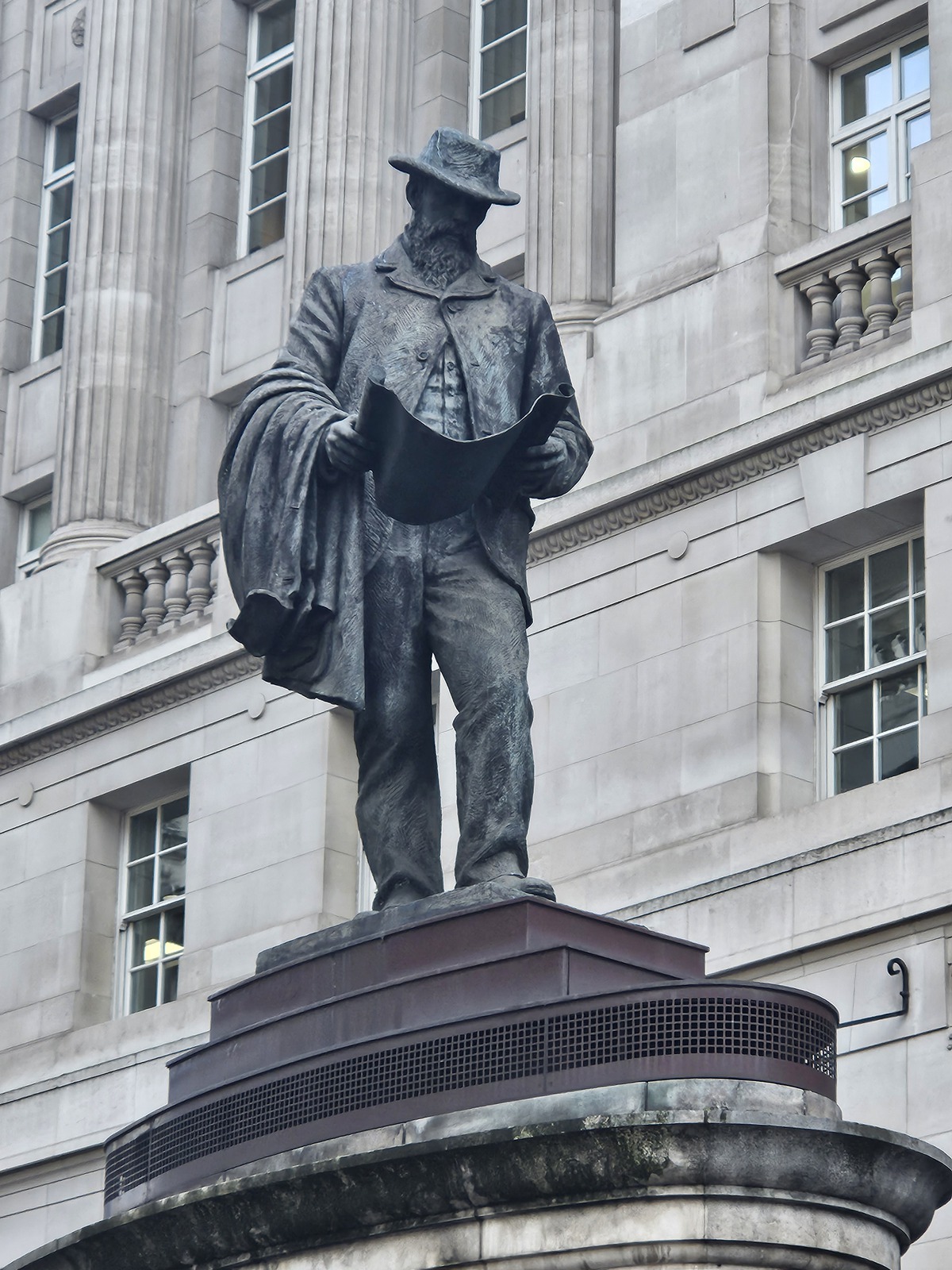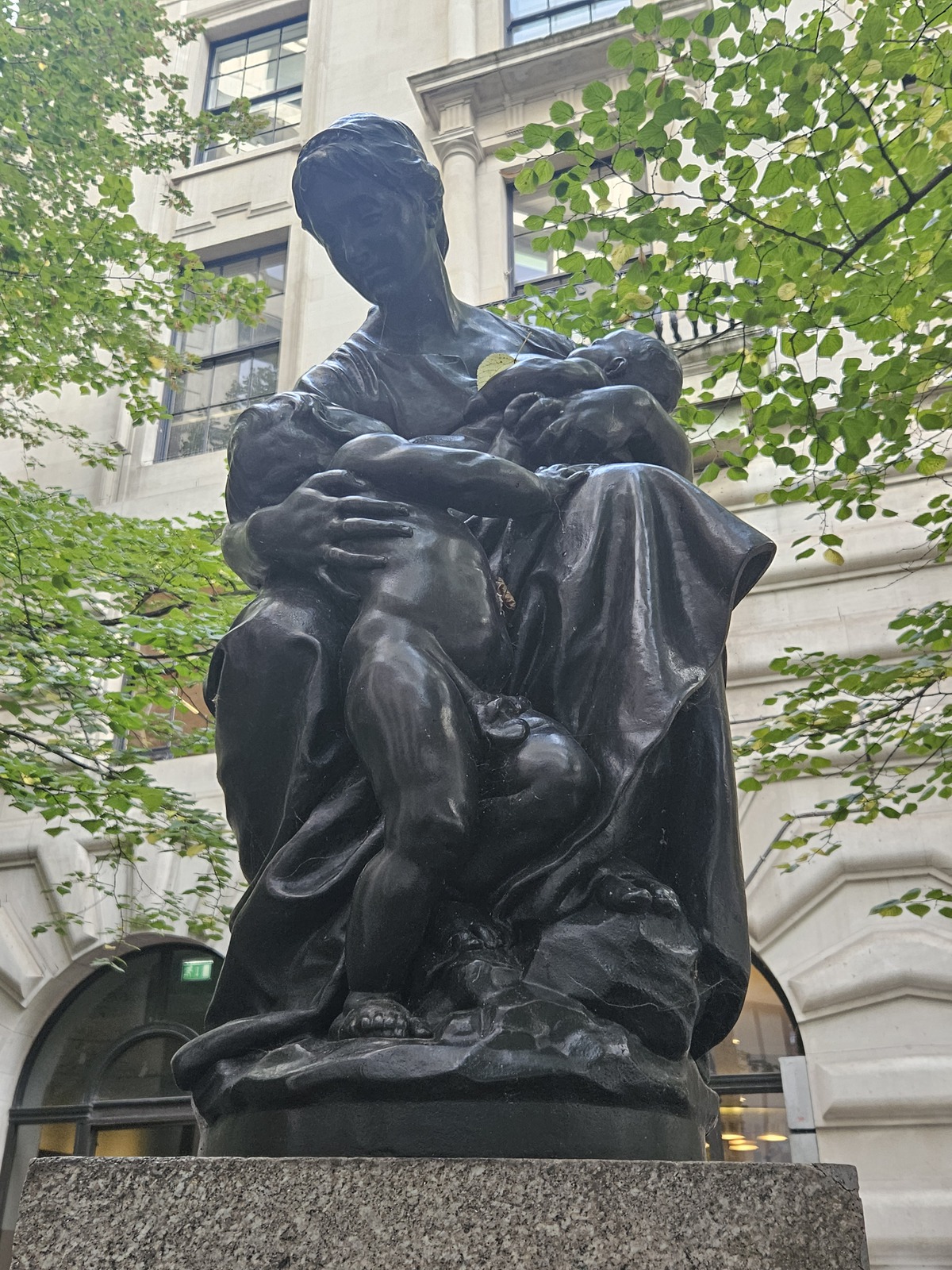The City is packed full of historic figures immortalised in bronze and marble, from stern looking Wellington outside the Royal Exchange, to the red and white City dragons proudly standing guard at the City limits. But what about those that people walk by without giving a second glance, or are perhaps down an alley to get to, don’t they deserve some recognition? Here at City Matters we’ve found some of our favourite ‘forgotten’ statues in the City and want to let you know all about them, it’s time to bring them into the light.
Hodge the Cat
Located outside the house of its master in Gough Square, Hodge the Cat was the beloved pet of Samuel Johnson, the man who composed the first English dictionary. Unveiled in 1997 by the then Lord Mayor of London Sir Roger Cook, the statue has been a public favourite for a number of years with people placing red ribbons around him during notable times of the year. Designed to be at shoulder height (and so easier to put an arm over) Hodge the Cat statue sits upon a copy Johnson’s famous dictionary with the inscription “a very fine cat indeed”. There are also a number of empty oyster shells next to Hodge, a reference to that fact that Samuel Johnson liked to buy oysters for the cat.
Minotaur
There is a minotaur in the maze of the Barbican, just don’t get lost looking for him. Located less than a five-minute walk from Moorgate station the sculpture was produced by Michael Ayrton for the City of London Corporation in 1973. It was initially placed in Postman’s Park to replace a statue commemorating Sir Robert Peel (responsible for the founding of the Metropolitan Police Force in 1829) but was moved after 20 years as it was purportedly deemed sacrilegious to the local area. It then hopped around the Barbican changing locations a few times before arriving at its current location next to Salter’s Garden.
James Greathead

An oft overlooked statue situated next to the Royal Exchange, the James Greathead sculpture by James Butler has deep roots for the development of the City and London. Greathead was notable for his work and contribution to the development of the London Underground system. He was one of the first people to develop the circular tunnelling shield design that allowed for easier and safer excavation of material for the construction of the tube. It is purported that the Greathead’s circular shield design was one of the inspirations for where the London Underground gets its colloquial name the ‘tube’. The statue stands upon a plinth in the middle of Cornhill Road that is designed to hide the fact it’s a ventilation shaft for the underground station below it and for the tunnels that he helped build.
Captain John Smith
Located a five-minute walk from St Paul’s Cathedral the statue of Captain John Smith stands defiantly next to St Mary-le-Bow church. Captain John Smith played a key role in the establishment of the first permanent English settlement in North America in 1607. The statue was a gift from the by the Jamestown Foundation of the Commonwealth of Virginia in 1960. From being charged with mutiny on the voyage to the new settlement, to being captured by the native Americans and almost being blown up in a gunpowder accident, Smith’s life was littered with extraordinary moments that sound too astonishing to be believed. The reason for his statue next to the St Mary-le-Bow church and not his church of burial located ten minutes away, is because it used to hold sermons for colonists before they departed for the new world.
Maternité

Exactly as the name suggests the Maternité by Aimé-Jules Dalou displays a French peasant woman with her children. Commissioned by the Drapers and Merchant Taylors’ Companies in 1878, the statue stands upon a grade II listed drinking fountain and was a notable addition at the time due to the fame of its sculptor. Initially sculpted in marble it was replaced by a bronze sculpture in 1897 due to rapid deterioration. Originally placed where the current Peabody statue resides, it was moved in 1954 a few metres away but is the reason why the otherwise rectangular Peabody statue stands on a hexagonal floor tile. Today it remains a tender moment of familial love and affection in the heart of the City.
Taxi!

A relatively new addition to the City the Taxi statue by American John Seward Johnson II succeeds in capturing a slice of life for workers in the City. The statue was originally completely coloured and was eerily realistic when it was first displayed on Park Avenue and 47th Street in New York . It was reported in his New York Times obituary that during the rescues following the 9/11 attacks another one of his statues was attempted to be rescued by firefighters. Today none of the colours remain, except for his white shirt, but it remains a statue imbued with culture from all over the world.
For the latest headlines from the City of London and beyond, follow City Matters on Twitter, Instagram and LinkedIn.







